- Clone
- Bu20a (See other available formats)
- Regulatory Status
- RUO
- Other Names
- Bromodeoxyuridine
- Isotype
- Mouse IgG1, κ
- Ave. Rating
- Submit a Review
- Product Citations
- 13 publications
| Cat # | Size | Price | Save |
|---|---|---|---|
| 339811 | 25 tests | ¥28,380 | |
| 339812 | 100 tests | ¥73,700 |
BrdU is a uridine derivative and a structural analog of thymidine that can be incorporated into DNA during the S-phase of the cell cycle as a substitute for thymidine. Cells can be pulse-labeled with BrdU and analyzed with antibodies against BrdU to determine the proportion of cells in the S-phase of the cell cycle during a given interval.
Product DetailsProduct Details
- Antibody Type
- Monoclonal
- Host Species
- Mouse
- Formulation
- Phosphate-buffered solution, pH 7.2, containing 0.09% sodium azide and BSA (origin USA)
- Preparation
- The antibody was purified by affinity chromatography, and conjugated with PE under optimal conditions.
- Concentration
- Lot-specific (to obtain lot-specific concentration and expiration, please enter the lot number in our Certificate of Analysis online tool.)
- Storage & Handling
- The antibody solution should be stored undiluted between 2°C and 8°C, and protected from prolonged exposure to light. Do not freeze.
- Application
-
ICFC - Quality tested
- Recommended Usage
-
Each lot of this antibody is quality control tested by immunofluorescent intracellular staining with flow cytometric analysis. For flow cytometric staining, the suggested use of this reagent is 5 µl per million cells in 100 µl staining volume or 5 µl per 100 µl of whole blood.
- Excitation Laser
-
Blue Laser (488 nm)
Green Laser (532 nm)/Yellow-Green Laser (561 nm)
-
Application References
(PubMed link indicates BioLegend citation) - Product Citations
-
- RRID
-
AB_1626188 (BioLegend Cat. No. 339811)
AB_1626186 (BioLegend Cat. No. 339812)
Antigen Details
- Structure
- Uridine derivative that can be incorporated into DNA and substitute for thymidine residues.
- Distribution
- Cells can be pulsed labeled with BrdU which will be incorporated into DNA during the synthesis phase of the cell cycle.
- Function
- Antibody against BrdU can be used to identify cells undergoing DNA replication during the period of BrdU incorporation.
- Biology Area
- Cell Biology, Cell Cycle/DNA Replication, Immunology
- Molecular Family
- Nuclear Markers
- Antigen References
-
1. Gratzner HG. 1982. Science 218:474.
2. Dolbeare F, et al. 1983. Proc. Natl. Acad. Sci. USA 80:5573.
3. Dolbeare F, et al. 1985. Cytometry 6:521. - Gene ID
- NA
- UniProt
- View information about BrdU on UniProt.org
Related Pages & Pathways
Pages
Related FAQs
- What type of PE do you use in your conjugates?
- We use R-PE in our conjugates.
Other Formats
View All BrdU Reagents Request Custom Conjugation| Description | Clone | Applications |
|---|---|---|
| APC anti-BrdU | Bu20a | ICFC |
| Purified anti-BrdU | Bu20a | ICFC,IHC-P |
| Biotin anti-BrdU | Bu20a | ICFC |
| PE anti-BrdU | Bu20a | ICFC |
Customers Also Purchased
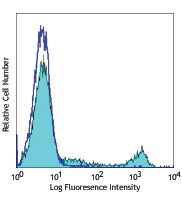
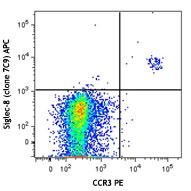
Compare Data Across All Formats
This data display is provided for general comparisons between formats.
Your actual data may vary due to variations in samples, target cells, instruments and their settings, staining conditions, and other factors.
If you need assistance with selecting the best format contact our expert technical support team.
-
APC anti-BrdU
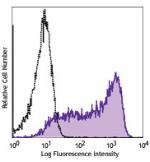
Human T lymphoblastic leukemia cell line, Hut-78, was pulsed... -
Purified anti-BrdU
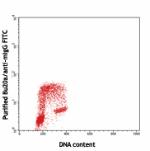
Brdu-incorporated Hut-78 cells stained with purified BU20a, ... -
Biotin anti-BrdU
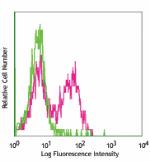
Brdu-incorporated Hut-78 cells stained with biotinylated BU2... -
PE anti-BrdU
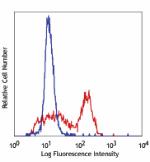
Brdu-incorporated Hut-78 cells stained with BU20a PE




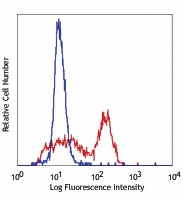







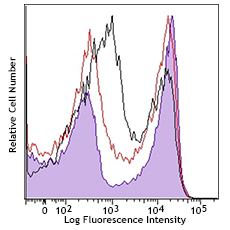








Follow Us